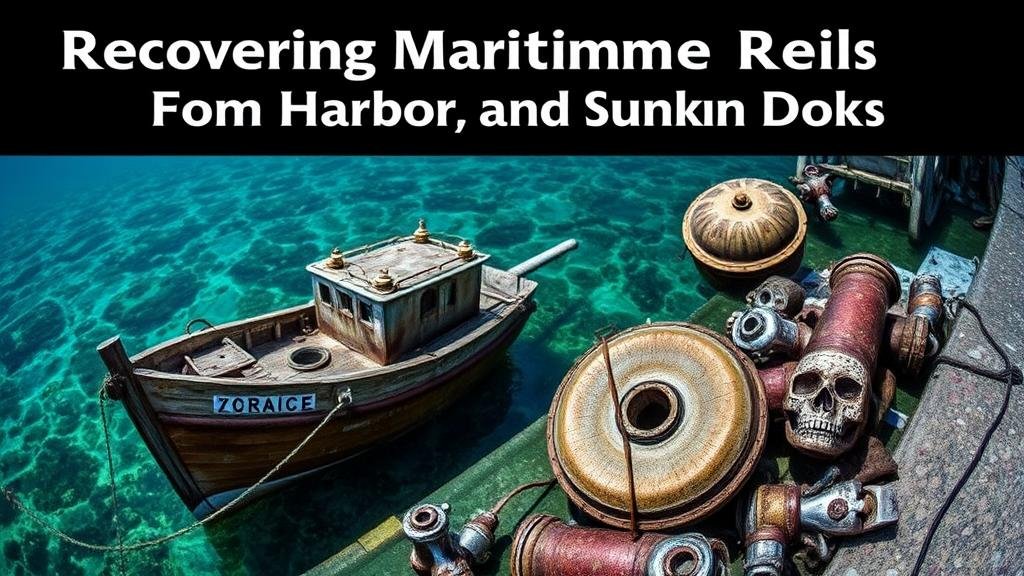Recovering Maritime Relics From Harbors and Sunken Docks
Recovering Maritime Relics From Harbors and Sunken Docks
Maritime archaeology has unveiled a rich tapestry of human history through the recovery of artifacts from beneath the waves. The practice of recovering maritime relics from harbors and submerged docks has gained prominence as both a scholarly pursuit and a means of preserving cultural heritage. This article delves into the methodologies, technologies, and implications of recovering these maritime relics, as well as the notable case studies that highlight the significance of such endeavors.
The Importance of Maritime Relics
Maritime relics serve as crucial links to our past, offering insights into the technological, economic, and social dimensions of maritime cultures. Artifacts such as shipwrecks, cargo items, and dock structures can illuminate trade routes, naval warfare, and daily life of past civilizations. For example, the recovery of the cargo from the Spanish galleon Nuestra Señora de Atocha, which sank off the Florida Keys in 1622, revealed the global nature of trade and the precious goods that traversed the seas.
Methodologies for Recovery
The recovery of maritime relics involves various methodologies that can be categorized into several approaches, depending on the type of site and the conditions of the surrounding environment.
- Survey Techniques: Initial surveys often employ remote sensing technologies such as sonar and magnetometry to map submerged sites. These technologies help archaeologists identify potential salvage areas. For example, the use of side-scan sonar in the search for the wreck of the Titanic provided a detailed underwater topography prior to the physical recovery.
- Excavation Protocols: Once a site is pinpointed, careful excavation techniques are employed, including sediment removal and controlled excavation layers. This method recognizes the stratigraphy of the site, ensuring the context of artifacts is preserved. The excavation of the Mary Rose, a Tudor warship, was meticulously planned to avoid damage to the fragile remains.
- Conservation Strategies: Post-recovery, artifacts often require specialized conservation treatments to stabilize and restore them. For example, bronze artifacts may undergo electrolysis to remove corrosion while ensuring the integrity of the material.
Technological Advancements in Recovery
Modern technology has greatly enhanced the efficiency and effectiveness of maritime recovery projects. Innovations such as remotely operated vehicles (ROVs) and autonomous underwater vehicles (AUVs) provide unprecedented access to depths that were previously challenging to explore. These vehicles can be equipped with high-resolution cameras and sampling instruments, allowing archaeologists to document and analyze sites with precision.
Also, advancements in 3D scanning technology have revolutionized the documentation process. By creating digital models of artifacts and sites, researchers can carry out analyses without the potential risks associated with physically handling fragile components. A prime example is the mapping of the USS Arizona, where digital models allow for ongoing study and preservation without interference from environmental degradation.
Case Studies of Successful Recoveries
Several notable successful recoveries exemplify the impact and importance of maritime archaeology:
- The Vasa Shipwreck: The 17th-century warship Vasa sank on her maiden voyage in 1628. After decades submerged in Stockholm harbor, it was recovered in 1961, leading to a comprehensive conservation effort. Today, the Vasa Museum attracts over a million visitors each year, bridging historical inquiry and public education.
- The Antikythera Mechanism: Found in a shipwreck off the coast of Greece, this ancient analog computer dates back to 150-100 BC. Its recovery and subsequent study have provided insights into ancient Greek engineering and astronomy, affirming the sophistication of their technological capabilities.
Challenges and Ethical Considerations
The field of maritime archaeology does not come without its challenges. The process involves significant funding, the need for specialized expertise, and logistics that can be both complex and costly. Also, ethical considerations arise concerning ownership and the treatment of artifacts, especially when recovered from international waters or territories with indigenous claims.
Debates on whether artifacts should remain in their found locations or be transferred to museums highlight the importance of engaging local communities in decision-making processes. The recovery of the HMS Challenger, for example, stirred controversy over the appropriate stewardship of the wreck and its surrounding artifacts.
Actionable Takeaways
The recovery of maritime relics from harbors and sunken docks is not solely an archaeological endeavor; it serves as a conduit for understanding human history and forging connections to our past. As technology progresses and methodologies improve, the scope and potential of maritime archaeology will expand even further. Stakeholders, including maritime historians, archaeologists, and the public, must advocate for sustainable practices and ethical considerations to effectively manage the delicate interplay between history, technology, and heritage preservation.
In summary, the recovery of maritime relics is a multifaceted process that requires collaboration, respect for cultural heritage, and a commitment to innovative practices. As we continue to explore our underwater heritage, it is crucial to balance scientific inquiry with ethical responsibility to ensure that these materials are preserved for future generations.



